Research on Dynamic Characteristics of Canopy and Column of Hydraulic Support under Impact Load
Abstract
:1. Introduction
2. Dynamic Characteristics of Canopy under Impact Load
2.1. Dynamic Model of Hydraulic Support
2.2. Spring Damping Stiffness Model of Column
2.3. Definition of Impact Load
3. Impact Response of the Hinge Point of the Canopy
3.1. Impact Response of the Hinge Point between the Canopy and the Column
3.2. Impact Response of the Hinge Point between the Canopy and the Caving Shield
4. Dynamic Characteristics of the Column under Impact Load
4.1. Fluid-Structure Interaction Model of the Column
4.2. Dynamic Characteristics of the Column Solid Domain
4.3. Dynamic Characteristics of the Column Fluid Domain
5. Conclusions
- (1)
- When the impact load acts at the front end of the canopy, the impact response of the hinge point of the canopy is large, and the pin shaft with higher yield strength should be selected to avoid the fracture failure of the pin shaft. When the impact load acts between the front column action line and the rear column action line, the impact response of the canopy hinge point is small, and it has good impact adaptability.
- (2)
- For the column hinge point, the impact response of the front column hinge point is more intense, and it is prone to impact failure above the front column hinge hole. Therefore, the front column hinge hole should be strengthened. For the hinge point of the caving shield, when the impact load changes along the width of the canopy, it shows obviously the eccentric load effect, which should ensure the uniform force of the canopy. Therefore, in the process of hydraulic support optimization, the adaptability of each hinge point under different working conditions should be fully considered.
- (3)
- Under the impact load, the stress concentration area of the column is at the bottom of the column, so when designing the structure of the column, it should strengthen the optimization design of the bottom of the column. The stress value of the two-level guide sleeve increases significantly, and the compressive and wear resistance of the inner surface of the two-level guide sleeve should strengthen.
- (4)
- Due to the impact load, the pressure and flow rate of the two-level cylinder liquid will increase significantly. In the middle of the shock, the streamline in the two-level cylinder will be sparse on both sides of the middle close, and a large eddy current will appear on both sides of the bottom of the cylinder. Therefore, the influence of liquid cannot be ignored in the design of column structure.
Author Contributions
Funding
Institutional Review Board Statement
Informed Consent Statement
Data Availability Statement
Conflicts of Interest
References
- Meng, Z.S.; Zhang, J.M.; Xie, Y.Y.; Lu, Z.G.; Zeng, Q.L. Analysis of the Force Response of a Double-Canopy Hydraulic Support under Impact Loads. Int. J. Simul. Model. 2021, 20, 766–777. [Google Scholar] [CrossRef]
- Wang, G.F.; Pang, Y.H.; Li, M.Z.; Ma, Y.; Liu, X.H. Hydraulic support and coal wall coupling relationship in ultra large height mining face. J. China Coal Soc. 2017, 42, 518–526. [Google Scholar] [CrossRef]
- Verma, A.K.; Deb, D. Numerical Analysis of an Interaction between Hydraulic-Powered Support and Surrounding Rock Strata. Int. J. Geomech. 2013, 13, 181–192. [Google Scholar] [CrossRef]
- Xu, Y.J.; Wang, G.F.; Ren, H.W. Theory of coupling relationship between surrounding rocks and powered support. J. China Coal Soc. 2015, 40, 2528–2533. [Google Scholar] [CrossRef]
- Lin, J.Z.; Yang, T.R.; Ni, K.X.; Han, C.Y.; Ma, H.; Gao, A.; Xiao, C.L. Effects of boundary conditions on stress distribution of hydraulic support: A simulation and experimental study. Adv. Mech. Eng. 2021, 13, 16878140211001194. [Google Scholar] [CrossRef]
- Zhai, G.D.; Yang, X.; Lu, X.H.; Ji, R.J.; Hu, W.Y. Finite Element Analysis of Canopy Column Socket and Column Hinge Joint of Hydraulic Support. Coal Mine Mach. 2021, 42, 64–66. [Google Scholar] [CrossRef]
- Zeng, X.T.; Meng, G.Y.Z.; Heng, K. Force Transmission Analysis of Sliding Block-Type Hydraulic Support under Impact Loads. Int. J. Simul. Model. 2019, 18, 100–111. [Google Scholar] [CrossRef]
- Wang, D.L.; Zeng, X.T.; Wang, G.F.; Li, R. Adaptability Analysis of Four-Leg Hydraulic Support with Large Mining Height under Impact Dynamic Load. Shock Vib. 2022, 2022, 2168871. [Google Scholar] [CrossRef]
- Ren, H.W.; Zhang, D.S.; Gong, S.X.; Zhou, K.; Xi, C.Y.; He, M.; Li, T.J. Dynamic impact experiment and response characteristics analysis for 1:2 reduced-scale model of hydraulic support. Int. J. Min. Sci. Technol. 2021, 31, 347–356. [Google Scholar] [CrossRef]
- Szurgacz, D.; Brodny, J. Adapting the Powered Roof Support to Diverse Mining and Geological Conditions. Energies. 2020, 13, 405. [Google Scholar] [CrossRef] [Green Version]
- Li, T.D.; Wang, J.R.; Zhang, K.; Zhang, C.H. Mechanical analysis of the structure of longwall mining hydraulic support. Sci. Prog. 2020, 103, 0036850420936479. [Google Scholar] [CrossRef] [PubMed]
- Yang, Z.K.; Sun, Z.Y.; Jiang, S.B.; Mao, Q.H.; Liu, P.; Xu, C.Z. Structural Analysis on Impact-Mechanical Properties of Ultra-High Hydraulic Support. Int. J. Simul. Model. 2020, 19, 17–28. [Google Scholar] [CrossRef]
- Zeng, Q.L.; Meng, Z.S.; Wan, L.R.; Wang, C.L. Analysis on Force Transmission Characteristics of Two-Legged Shield Support under Impact Loading. Shock Vib. 2018, 2018, 3854684. [Google Scholar] [CrossRef] [Green Version]
- Liang, L.C.; Tian, J.J.; Zheng, H.; Jiao, S.J. A study on force transmission in a hydraulic support under impact loading on its canopy beam. J. China Coal Soc. 2015, 40, 2522–2527. [Google Scholar] [CrossRef]
- Liu, Y.Z.; Shi, W.; Wang, W.H.; Li, X.; Qi, S.; Wang, B. Dynamic Analysis of Monopile-Type Offshore Wind Turbine Under Sea Ice Coupling With Fluid-Structure Interaction. Front. Mar. Sci. 2022, 9. [Google Scholar] [CrossRef]
- Liang, Z.J.; Guo, C.Y.; Wang, C.S. The Connection between flow pattern evolution and vibration in 90-degree pipeline: Bidirectional fluid-structure interaction. Energy Sci. Eng. 2021, 10, 308–323. [Google Scholar] [CrossRef]
- Wang, Y.F.; Wang, J.; He, Z.L.; Sun, J.W.; Wang, T.; Liu, C.H. Investigation on Dynamic Characteristics of the Reed Valve in Compressors Based on Fluid-Structure Interaction Method. Appl. Sci. 2021, 11, 3946. [Google Scholar] [CrossRef]
- Guo, Q.; Zhou, J.X.; Guan, X.L. Fluid–structure interaction in Z-shaped pipe with different supports. Acta Mech. Sin. 2020, 36, 513–523. [Google Scholar] [CrossRef]
- Guo, W.J.; Lu, C.Y.; Yan, X.L.; Wen, X.L.; Wang, H.F. On Transient Flow Field of Asymmetric Hydraulic Cylinder at Start-up. Sci. Technol. Eng. 2020, 20, 4338–4344. [Google Scholar]
- Qu, W.; Zhang, H.L.; Li, W.; Sun, W.Q.; Zhao, L.N.; Ning, H.H. Influence of Support Stiffness on Dynamic Characteristics of the Hydraulic Pipe Subjected to Basic Vibration. Shock Vib. 2018, 2018, 4035725. [Google Scholar] [CrossRef]
- Szurgacz, D.; Brodny, J. Analysis of the Influence of Dynamic Load on the Work Parameters of a Powered Roof Support’s Hydraulic Leg. Sustainability 2019, 11, 2570. [Google Scholar] [CrossRef] [Green Version]
- Szurgacz, D. Dynamic Analysis for the Hydraulic Leg Power of a Powered Roof Support. Energies 2021, 14, 5715. [Google Scholar] [CrossRef]
- Xu, W. Study on Load Characteristics of Hydraulic Support Column under Impact Load. Coal Mine Mach. 2021, 42, 63–66. [Google Scholar] [CrossRef]
- Sui, X.H.; Liu, C.; Su, X.; He, J. Performance Analysis of Cylinder Body of Telescopic Cylinder Based on Fluid-solid Coupling. Coal Mine Mach. 2015, 36, 113–115. [Google Scholar] [CrossRef]
- Liu, X.K.; Zhao, Z.H.; Zhao, Y. Study on Dynamic Features of Leg Applied to Hydraulic Powered Support Under Bumping Load. Coal Sci. Technol. 2012, 40, 66–70. [Google Scholar] [CrossRef]
- Tomski, L.; Uzny, S. A hydraulic cylinder subjected to Euler’s load in aspect of the stability and free vibrations taking into account discrete elastic elements. Arch. Civ. Mech. Eng. 2011, 11, 769–785. [Google Scholar] [CrossRef]
- Liang, L.C.; Ren, H.W.; Zheng, H. Analysis on mechanical-hydraulic coupling rigidity characteristics of hydraulic powered support. Coal Sci. Technol. 2018, 46, 141–147. [Google Scholar] [CrossRef]
- Feng, H.; Du, Q.G.; Huang, Y.X.; Chi, Y.B. Modeling Study on Stiffness Characteristics of Hydraulic Cylinder under Multi-Factors. Stroj. Vestn.-J. Mech. Eng. 2017, 63, 447–456. [Google Scholar] [CrossRef] [Green Version]
- Jiang, W.; Luo, X.; Chen, X.D. Influence of structural flexibility on the nonlinear stiffness of hydraulic system. Adv. Mech. Eng. 2016, 8, 1687814016663806. [Google Scholar] [CrossRef] [Green Version]
- Li, Z.G.; Chen, Y.M.; Zhong, D.H.; Zhang, K.; Huang, L.S.; Liu, Y.; Li, Y.X. Fatigue Analysis of Hydraulic Support Column Based on Fluid-solid Coupling. Coal Mine Mach. 2022, 43, 72–74. [Google Scholar] [CrossRef]
- Świątek, J.; Janoszek, T.; Cichy, T.; Stoiński, K. Computational Fluid Dynamics Simulations for Investigation of the Damage Causes in Safety Elements of Powered Roof Supports—A Case Study. Energies 2021, 14, 1027. [Google Scholar] [CrossRef]
- Zhang, R.; Jiang, F.; Yang, J.; Hu, T.W.; Wang, W.Q. Fluid-structure Coupling Analysis of Hydraulic Cylinder Based on Dynamic Mesh Technology. China Mech. Eng. 2017, 28, 156–162. [Google Scholar]
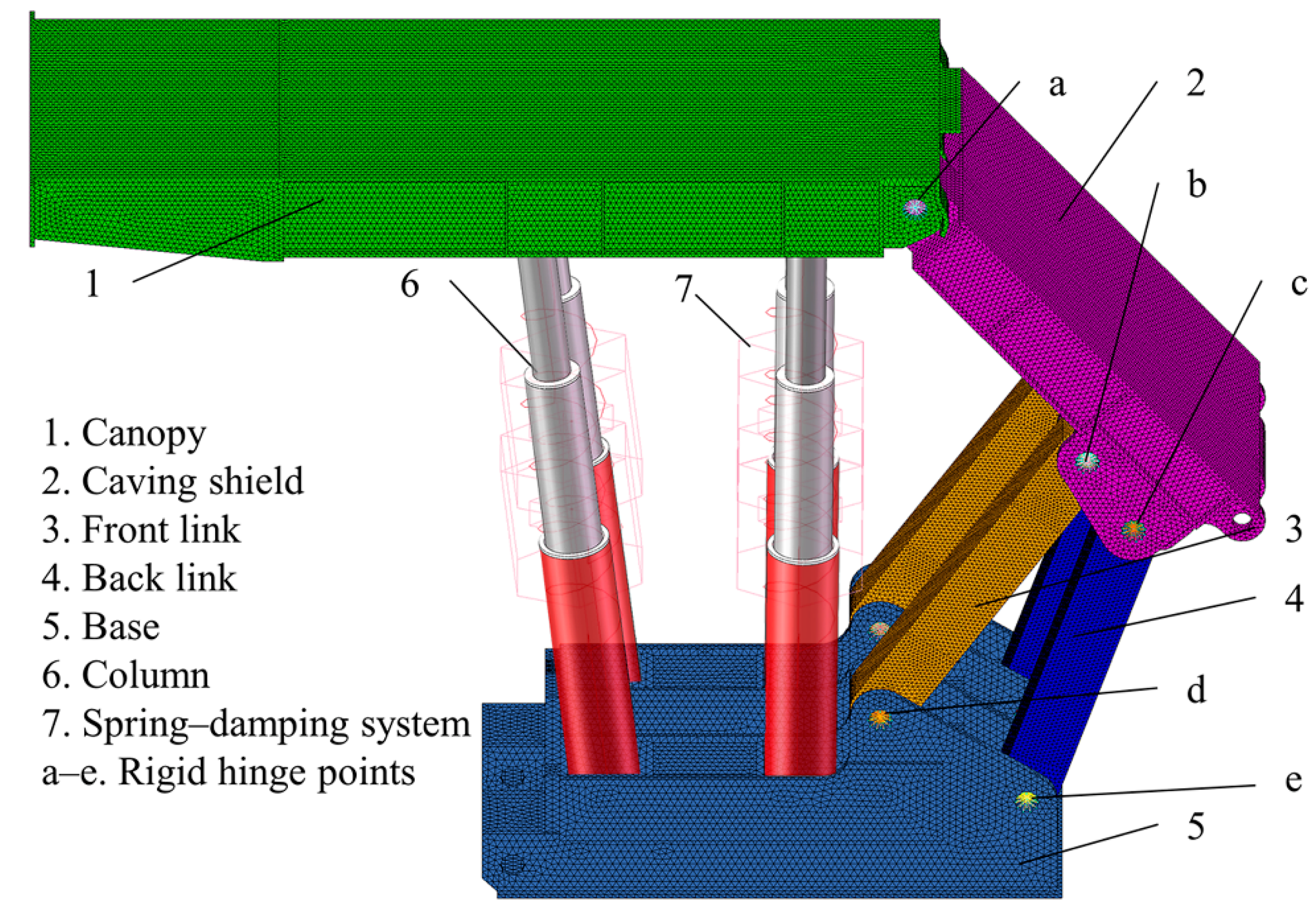

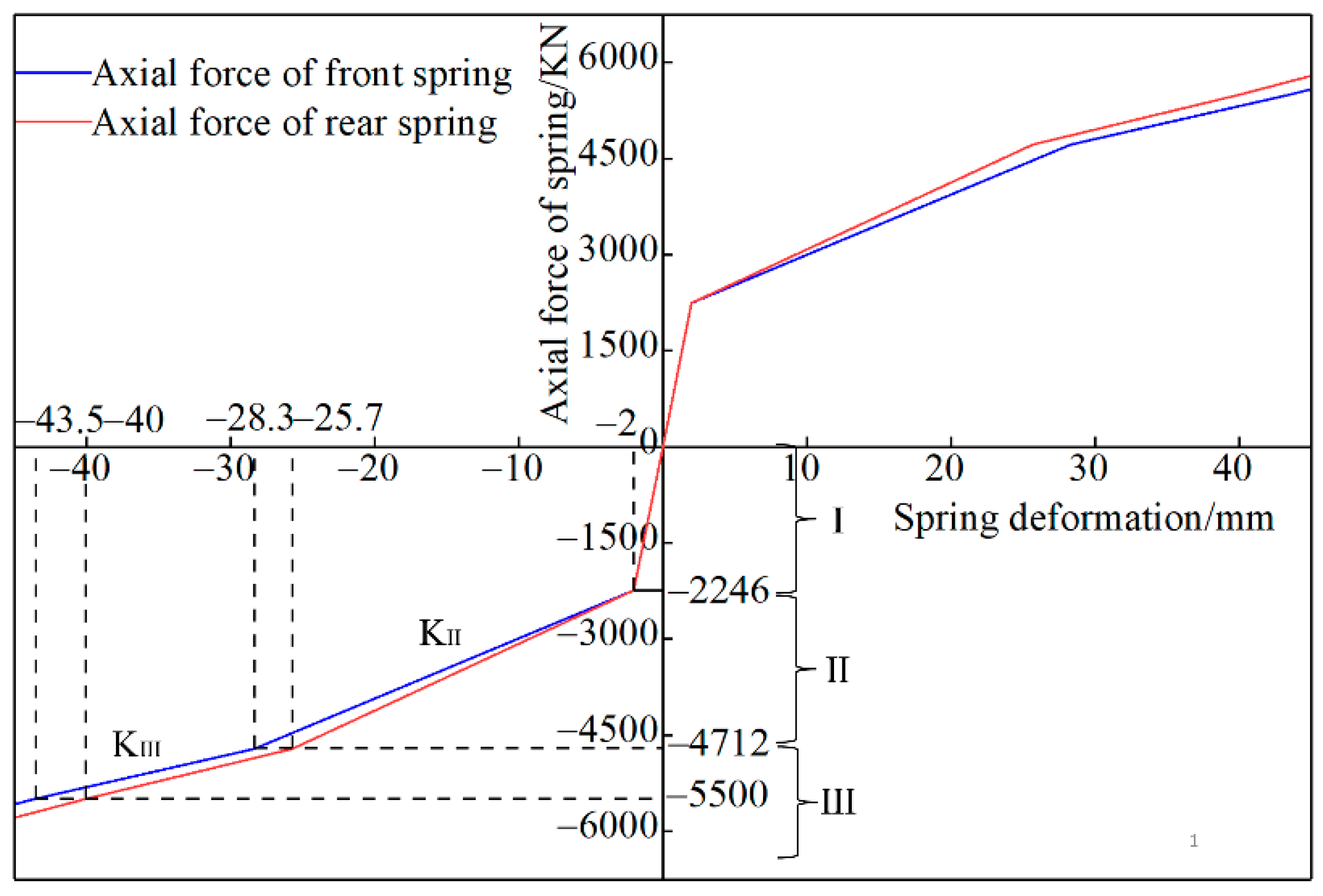
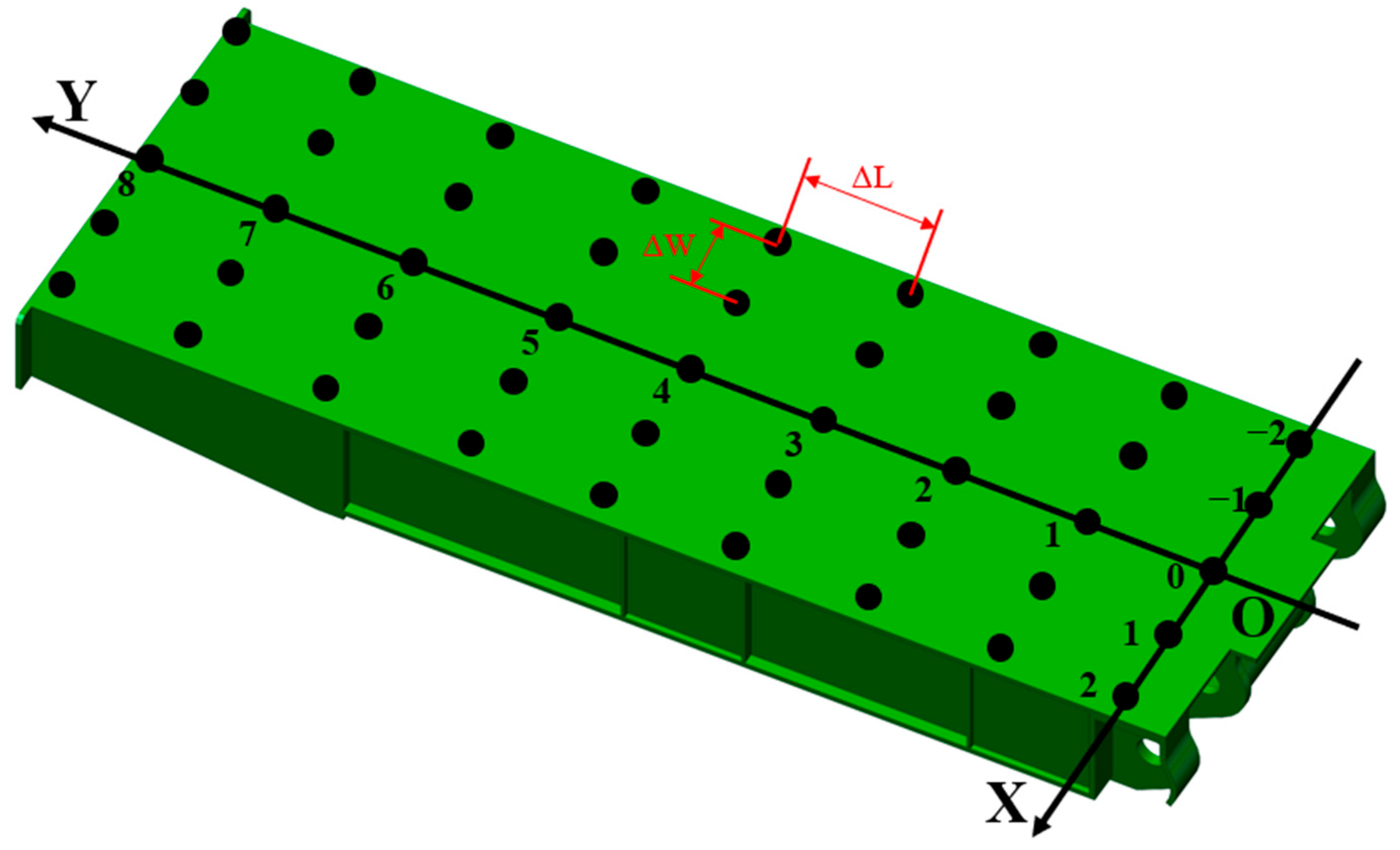

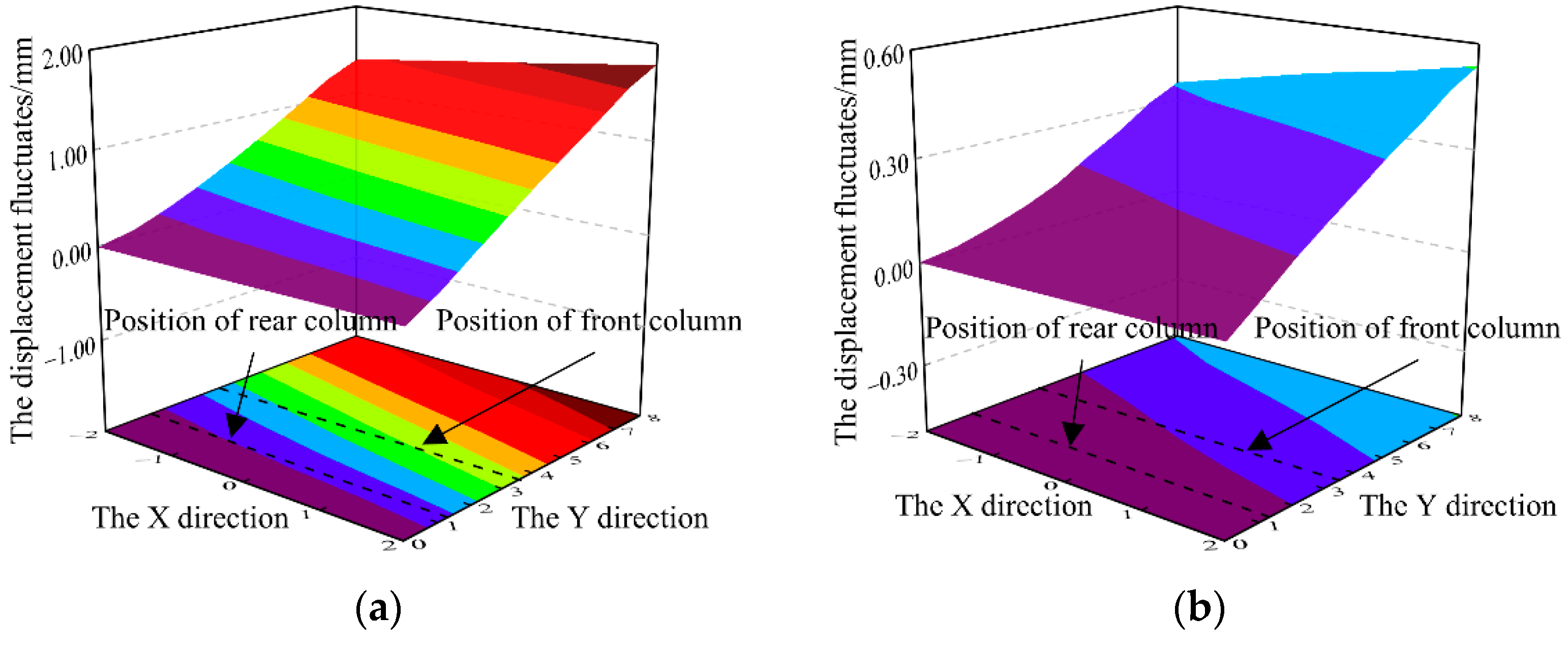
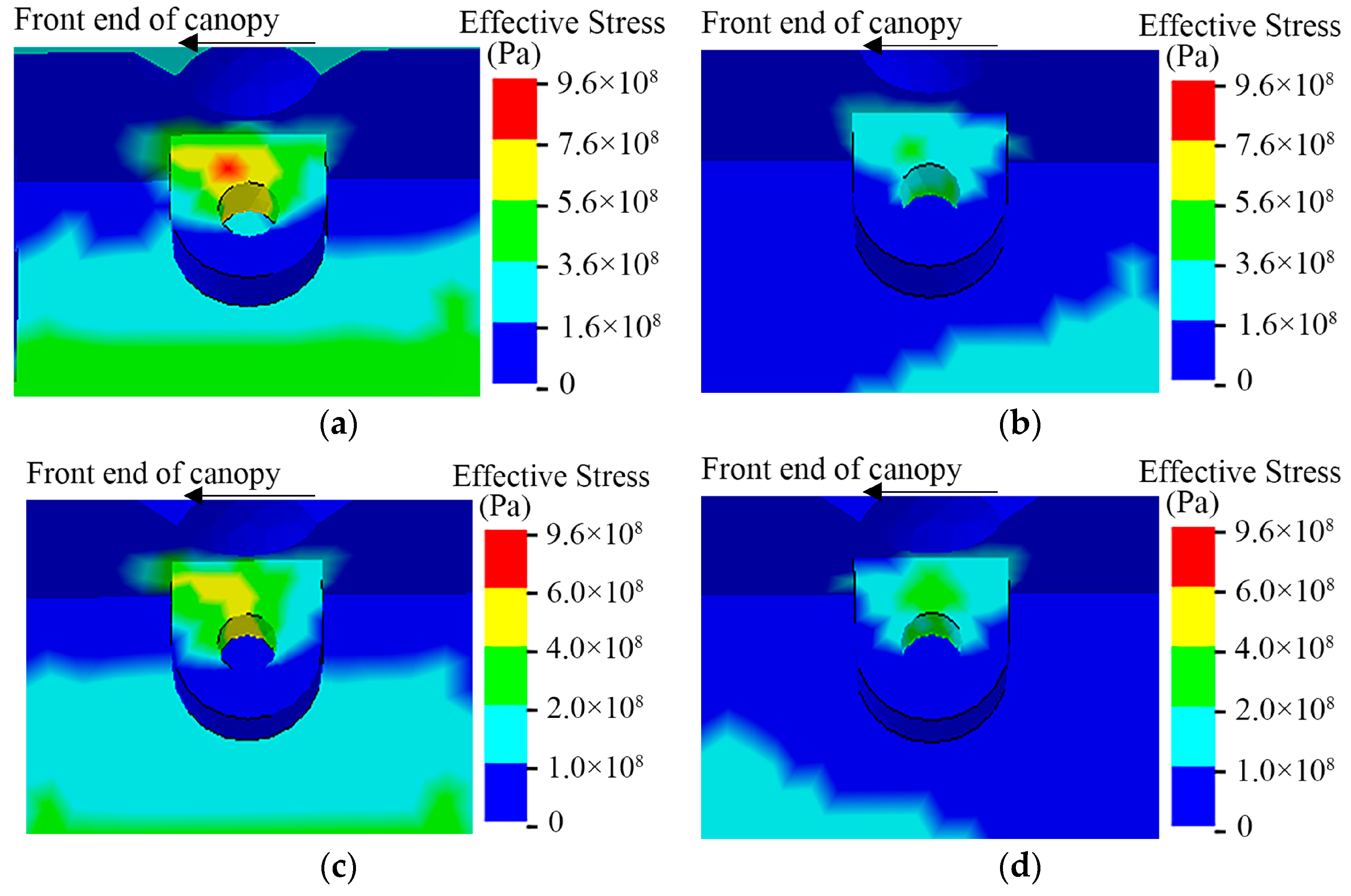
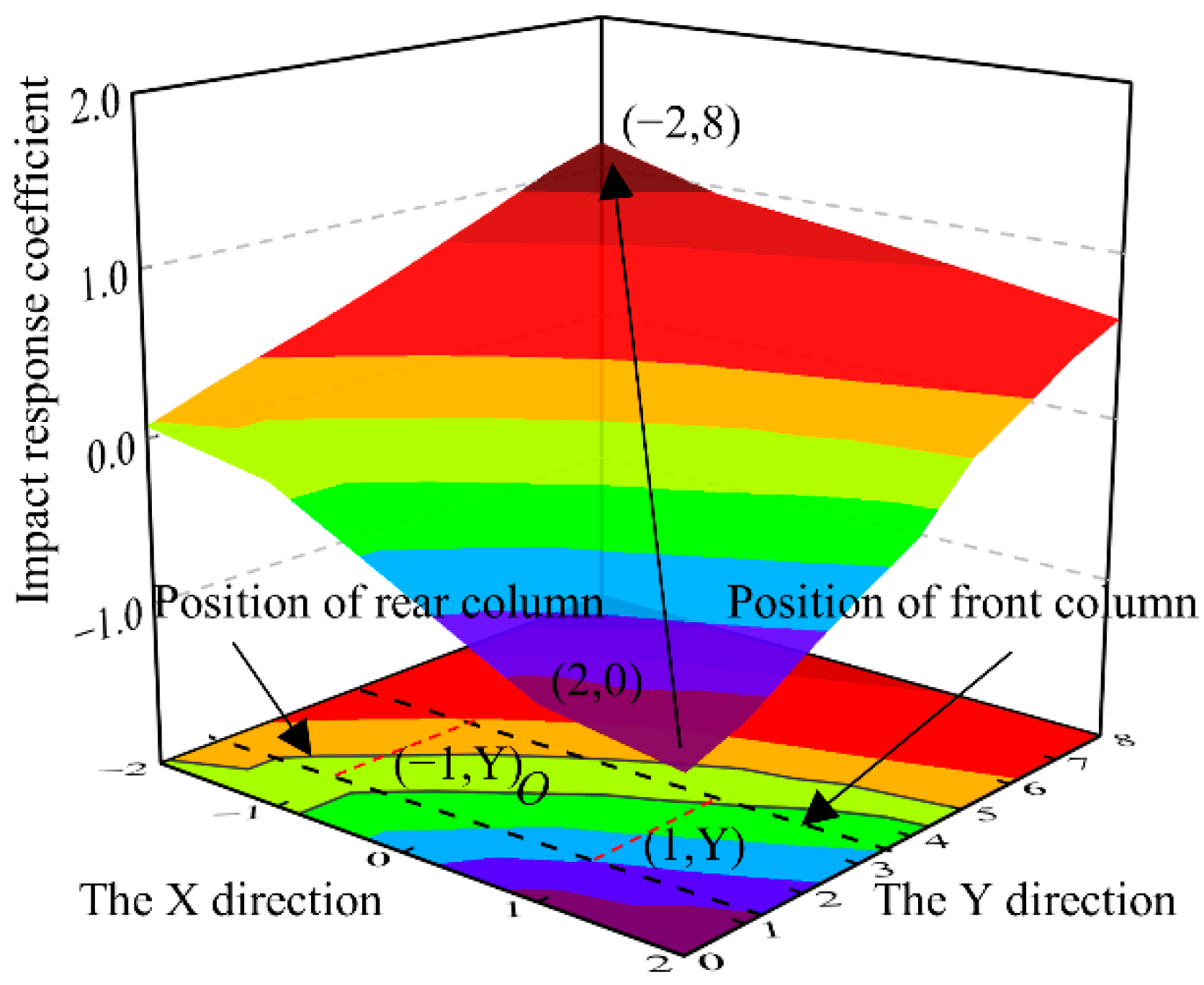


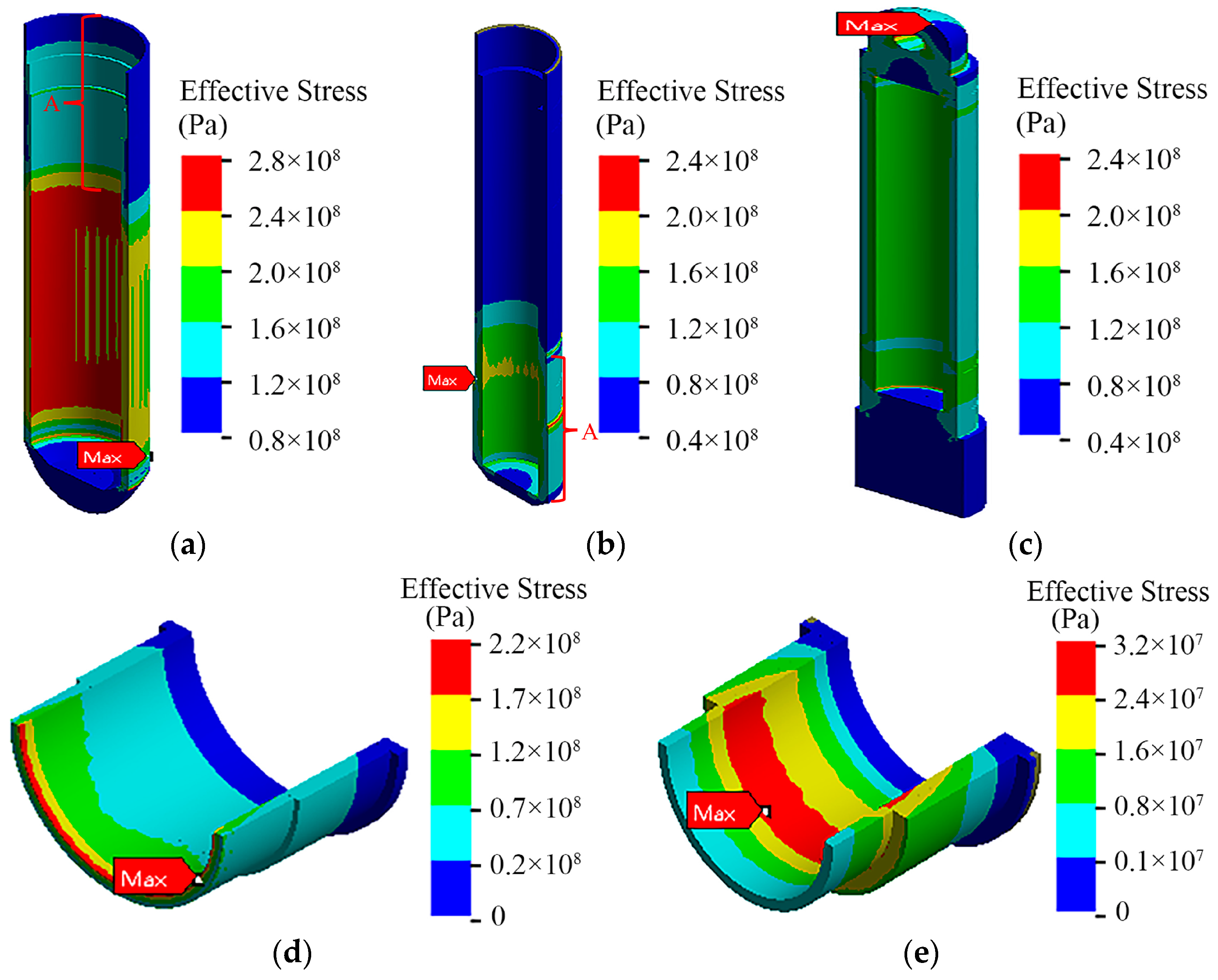
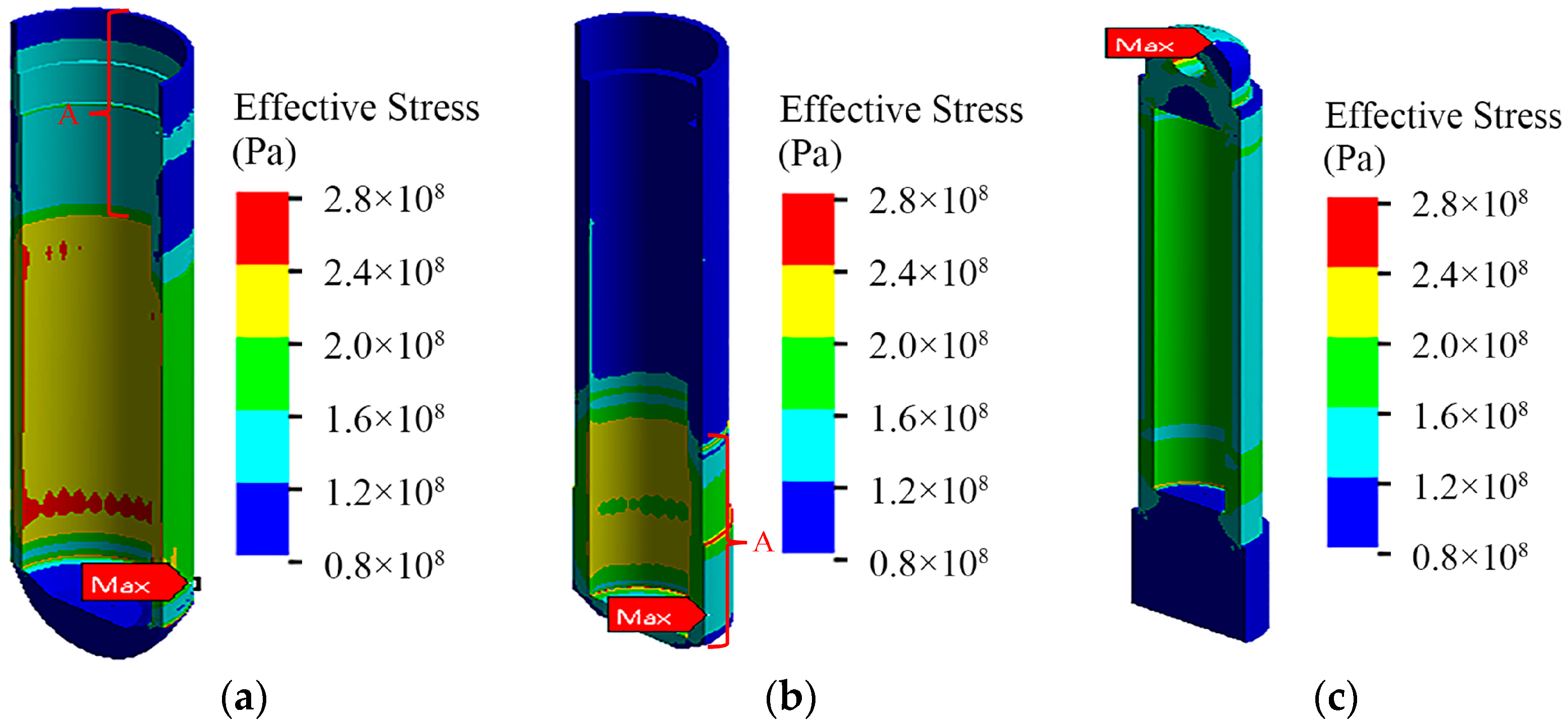

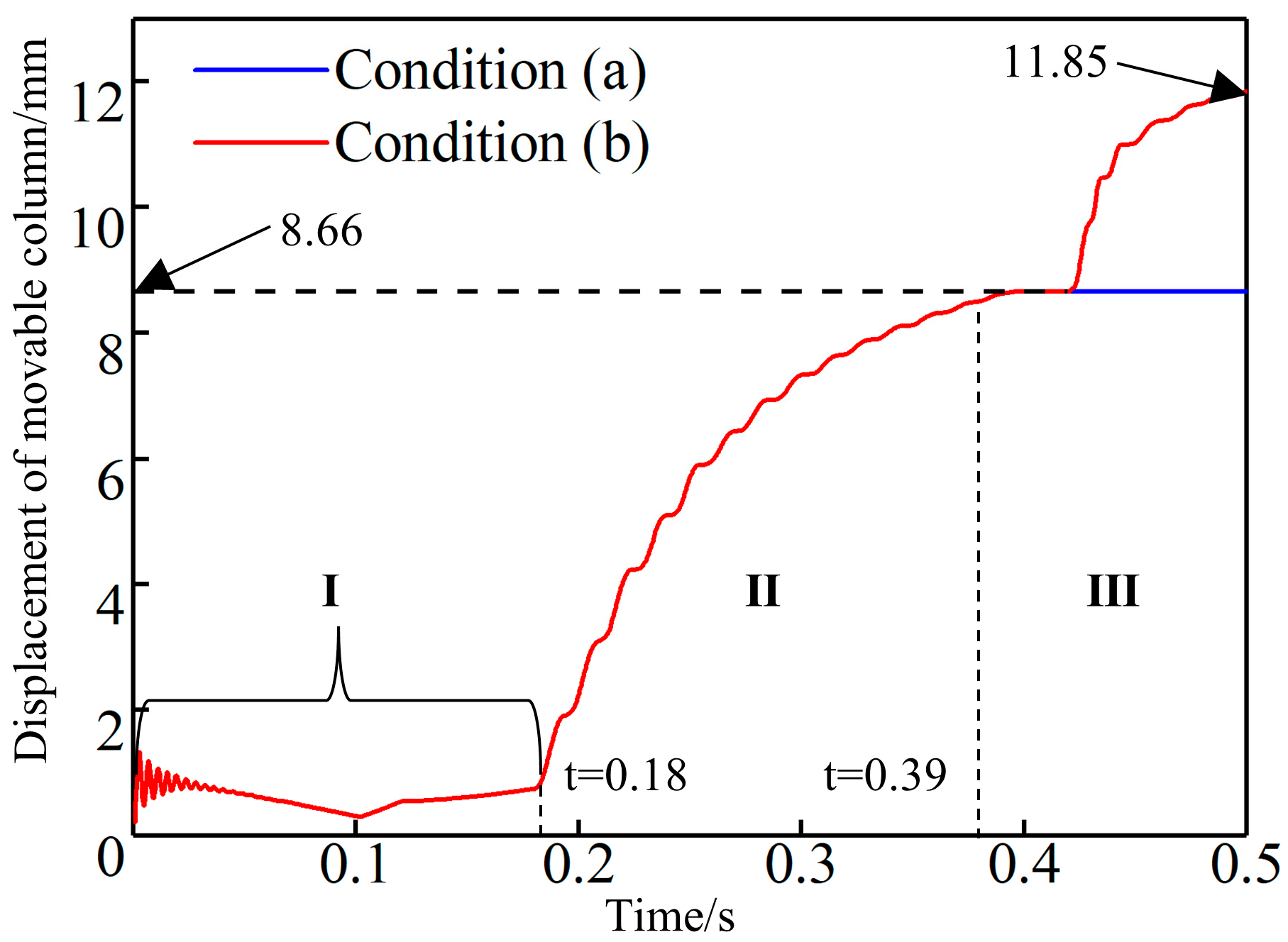
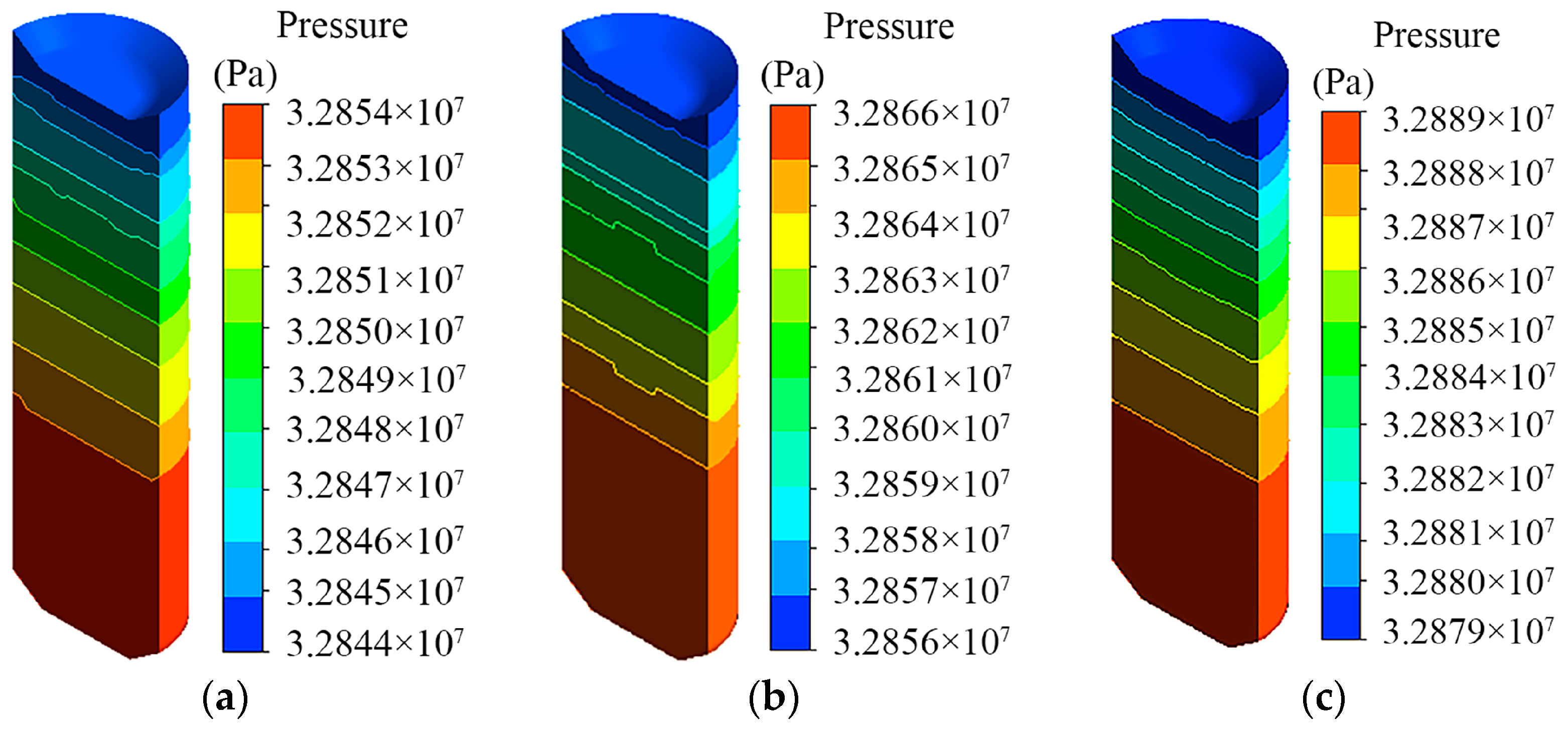
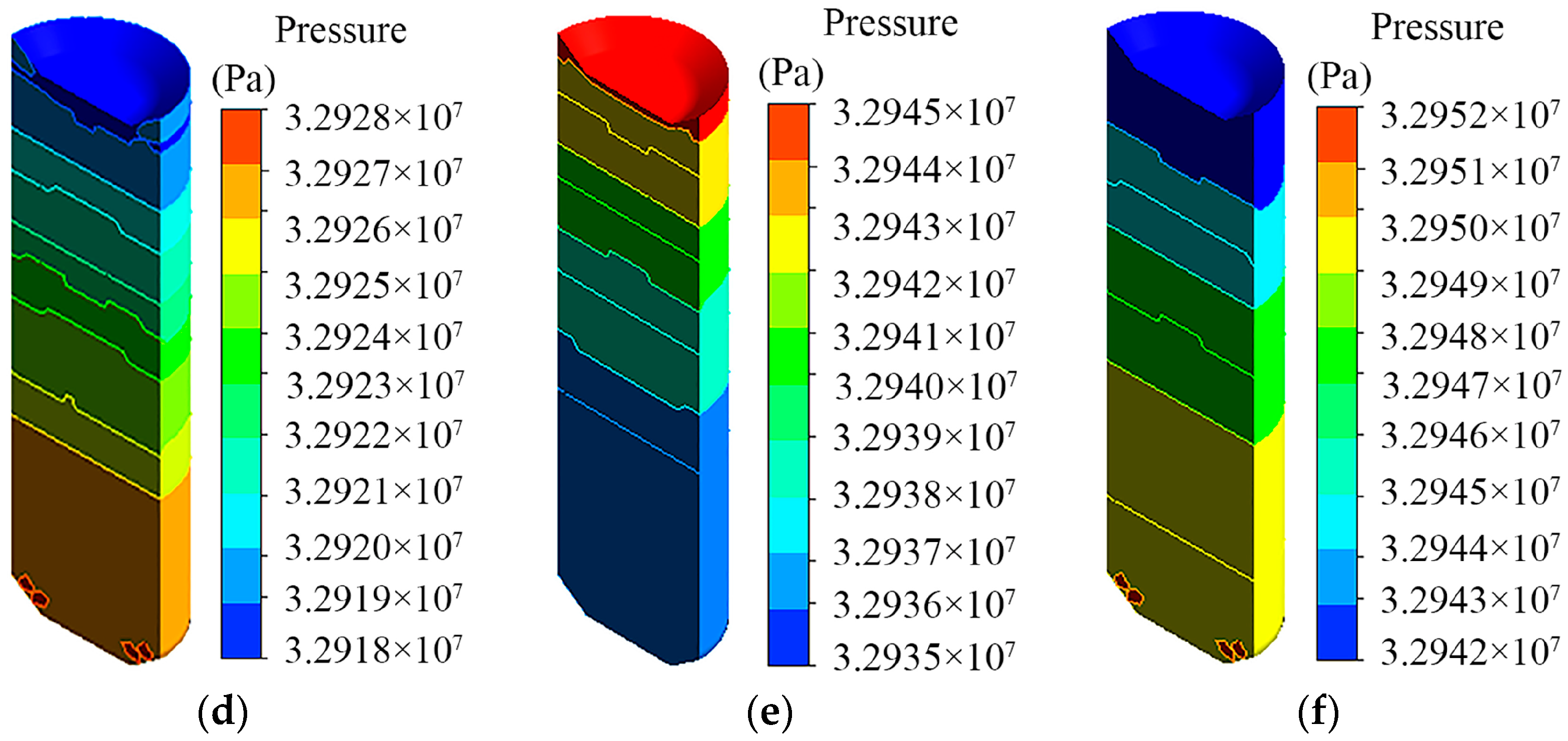
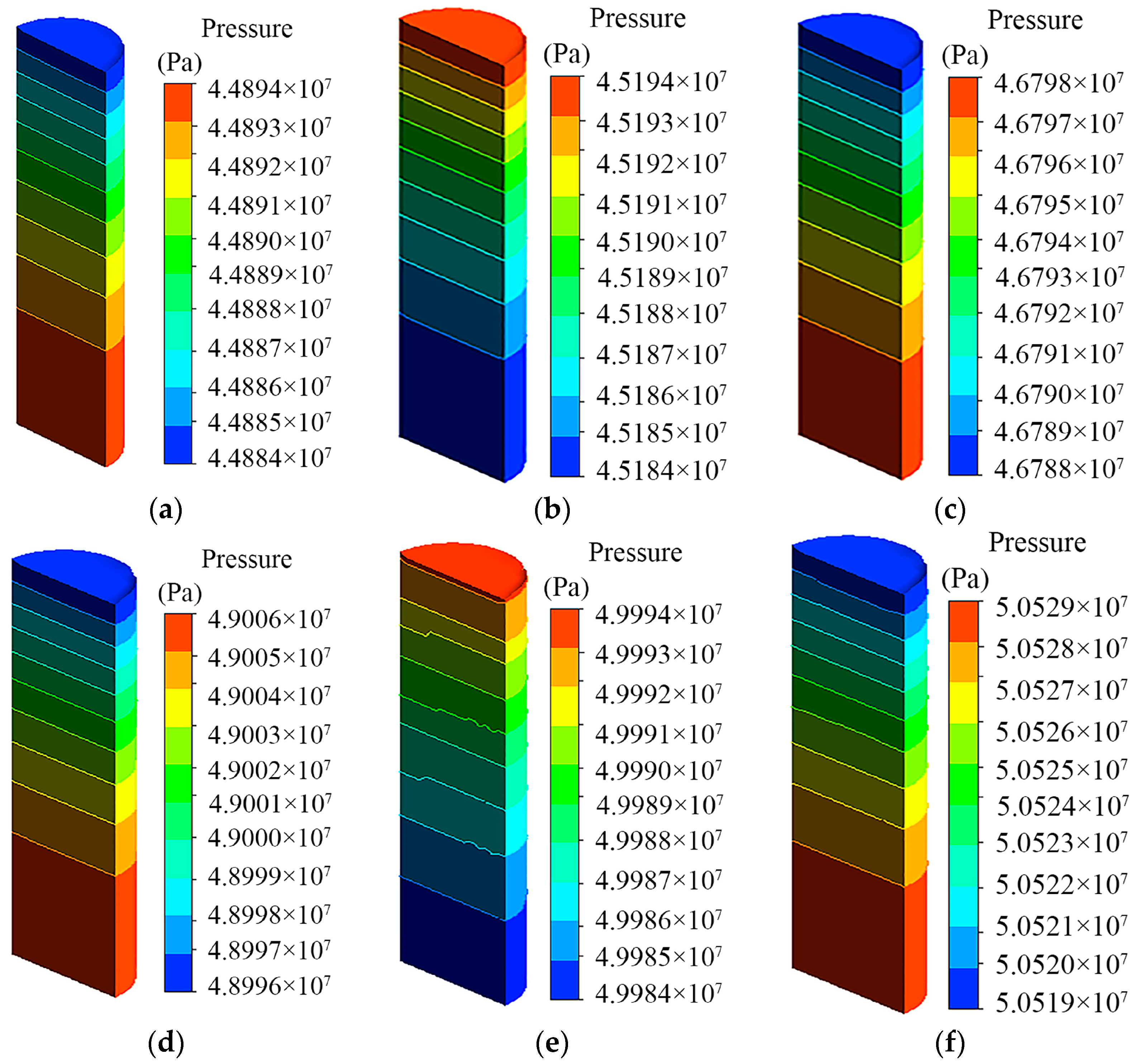
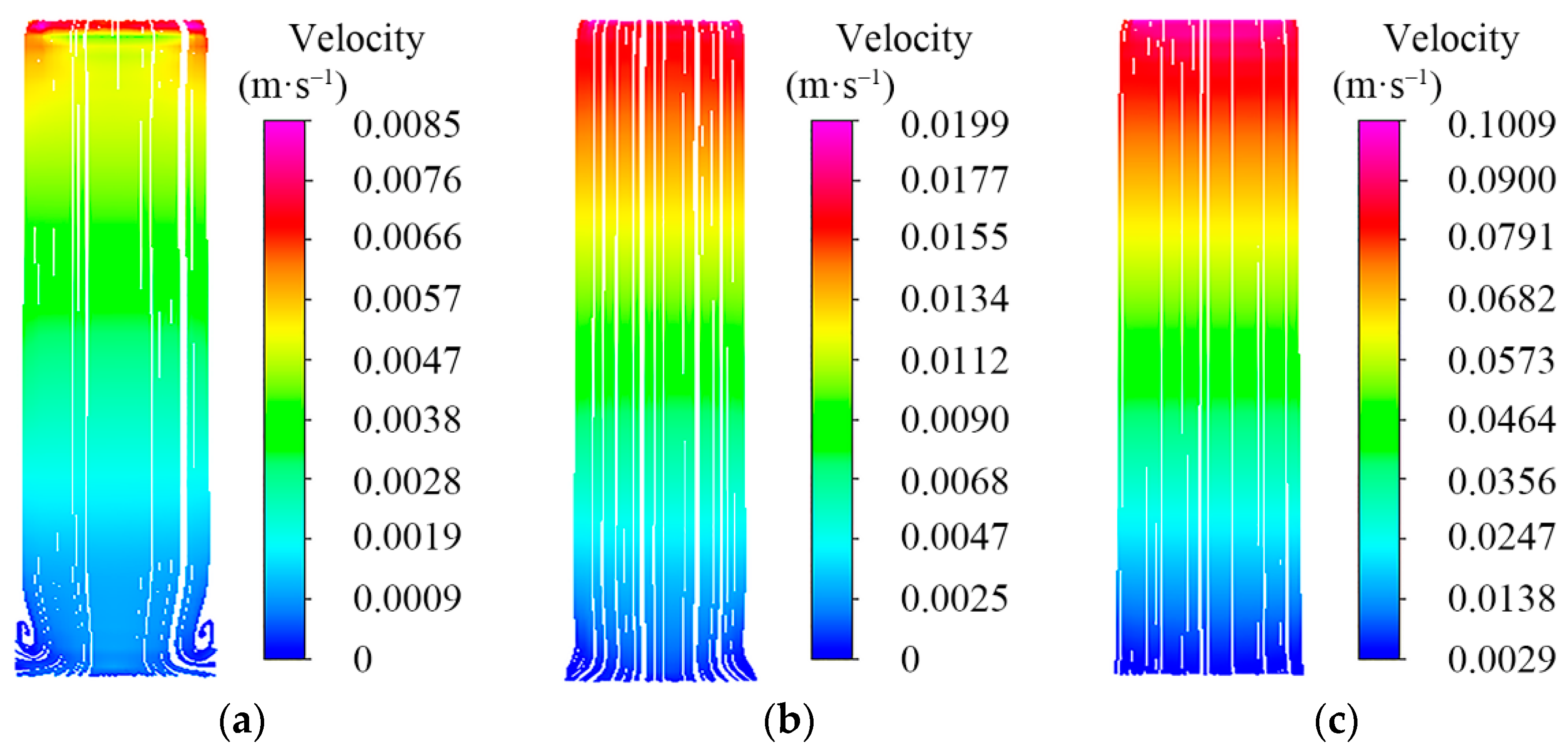
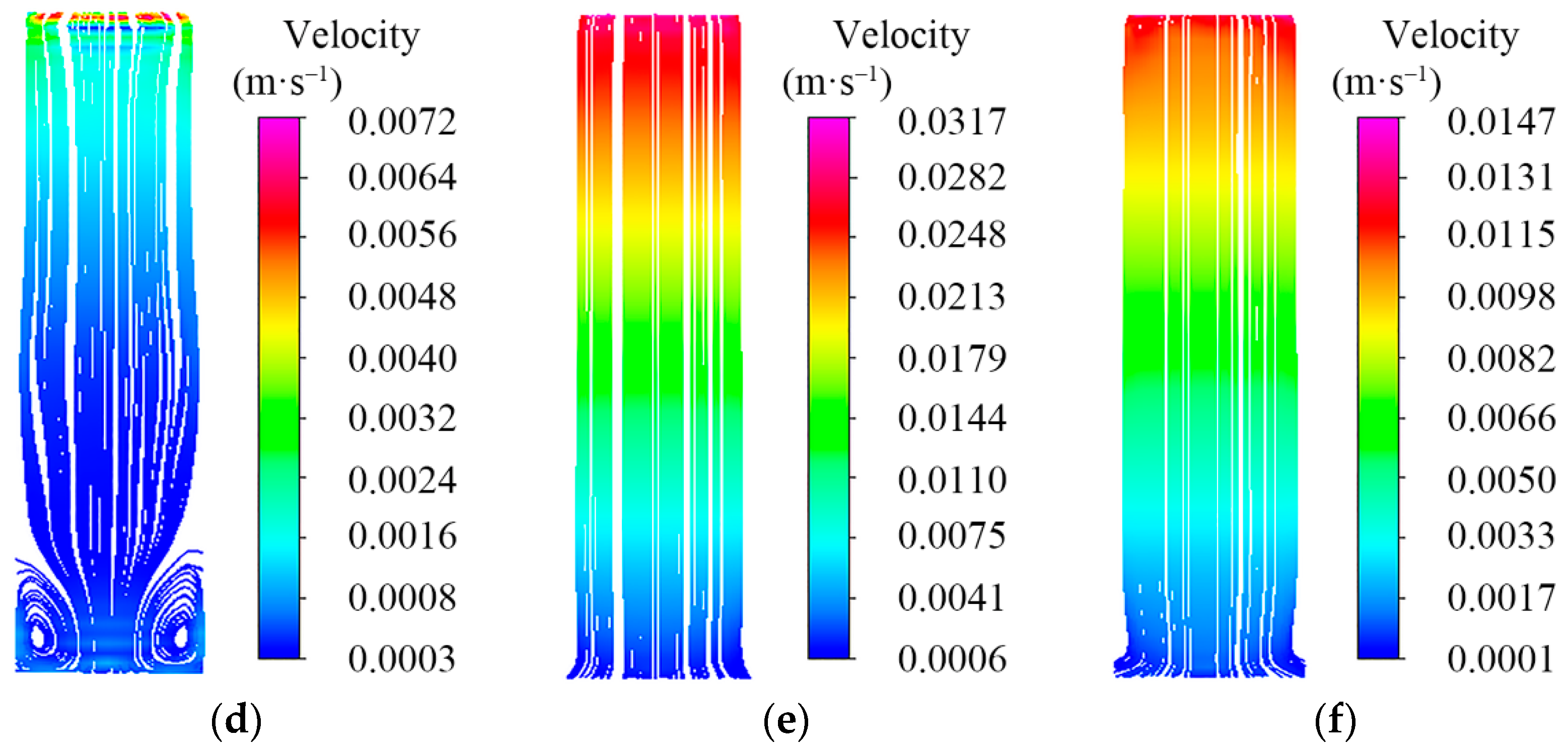
| 7830 | 0.3 |
| Column | External Diameter/mm | Internal Diameter/mm | Emulsion Length/mm | |
|---|---|---|---|---|
| front column | one-level cylinder | 440 | 400 | 1280 |
| two-level cylinder | 380 | 290 | 1298 | |
| rear column | one-level cylinder | 440 | 400 | 1280 |
| two-level cylinder | 380 | 290 | 1265 | |
| Column | First Stage(N/m) | Second Stage(N/m) | Third Stage(N/m) |
|---|---|---|---|
| front column | |||
| rear column |
Publisher’s Note: MDPI stays neutral with regard to jurisdictional claims in published maps and institutional affiliations. |
© 2022 by the authors. Licensee MDPI, Basel, Switzerland. This article is an open access article distributed under the terms and conditions of the Creative Commons Attribution (CC BY) license (https://creativecommons.org/licenses/by/4.0/).
Share and Cite
Zeng, Q.; Li, Z.; Wan, L.; Ma, D.; Wang, J. Research on Dynamic Characteristics of Canopy and Column of Hydraulic Support under Impact Load. Energies 2022, 15, 4638. https://doi.org/10.3390/en15134638
Zeng Q, Li Z, Wan L, Ma D, Wang J. Research on Dynamic Characteristics of Canopy and Column of Hydraulic Support under Impact Load. Energies. 2022; 15(13):4638. https://doi.org/10.3390/en15134638
Chicago/Turabian StyleZeng, Qingliang, Zhaoji Li, Lirong Wan, Dejian Ma, and Jiantao Wang. 2022. "Research on Dynamic Characteristics of Canopy and Column of Hydraulic Support under Impact Load" Energies 15, no. 13: 4638. https://doi.org/10.3390/en15134638
APA StyleZeng, Q., Li, Z., Wan, L., Ma, D., & Wang, J. (2022). Research on Dynamic Characteristics of Canopy and Column of Hydraulic Support under Impact Load. Energies, 15(13), 4638. https://doi.org/10.3390/en15134638







